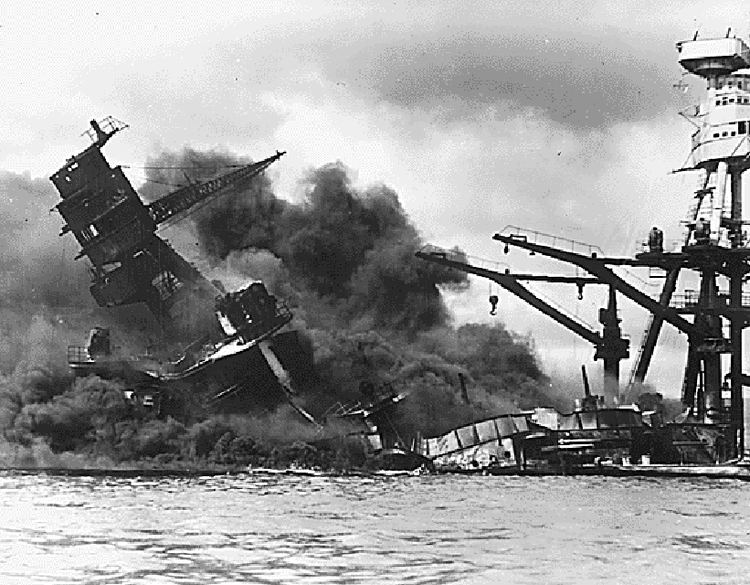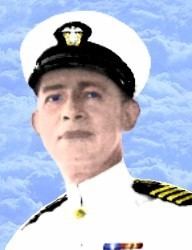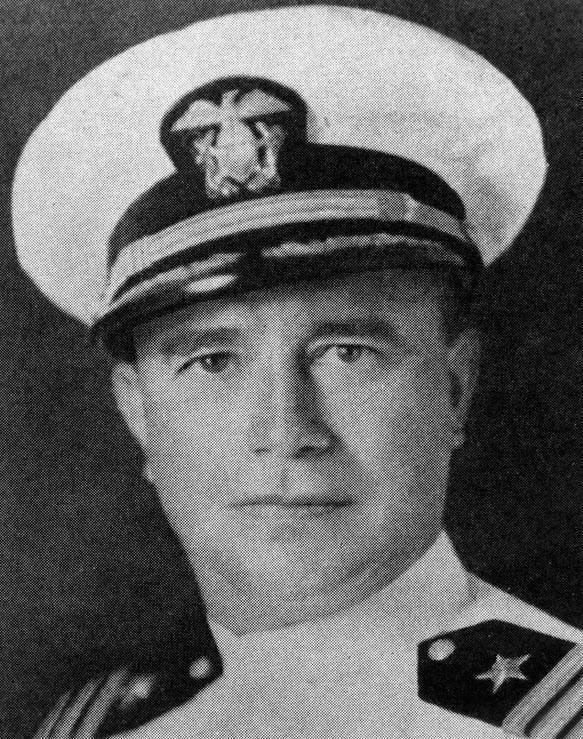Years of service 1909 – 1941 | Name Franklin Valkenburgh | |
 | ||
Born April 5, 1888Minneapolis, Minnesota ( 1888-04-05 ) Commands held USS Talbot (DD-114)Destroyer Squadron FiveUSS Melville (AD-2) Died December 7, 1941, Pearl Harbor, Honolulu County, Hawaii, Hawaii, United States Battles and wars | ||
Franklin Van Valkenburgh (April 5, 1888 – December 7, 1941) was the last captain of the USS Arizona (BB-39). He was killed when the Arizona exploded and sank during the attack on Pearl Harbor.
Contents

Military service

Franklin Van Valkenburgh was appointed a midshipman at the United States Naval Academy on September 15, 1905, and graduated on June 4, 1909. After service in the battleship USS Vermont (BB-20) and in USS South Carolina, Van Valkenburgh was commissioned ensign on June 5, 1911. Traveling to the Asiatic Station soon thereafter, he joined the submarine tender USS Rainbow (AS-7) at Olongapo, Philippine Islands, on September 11,. He reported to the gunboat USS Pampanga (PG-39) as executive officer on June 23, 1914, for a short tour in the southern Philippines before his detachment on August 4,.

After returning to the United States, Lt. (jg.) Van Valkenburgh joined USS Connecticut (BB-18) on November 11,. Following postgraduate work in steam engineering at the Naval Academy in September 1915, he took further instruction in that field at Columbia University before reporting to USS Rhode Island (BB-17) on March 2, 1917. The entry of the United States into World War I found Van Valkenburgh serving as the battleship's engineering officer. Subsequent temporary duty in the receiving ship at New York preceded his first tour as an instructor at the Naval Academy. On June 1, 1920, Van Valkenburgh reported on board USS Minnesota (BB-22) for duty as engineer officer, and he held that post until the battleship was decommissioned in November 1921.
He again served as an instructor at the Naval Academy—until May 15, 1925—before he joined USS Maryland (BB-46) on June 26,. Commissioned commander on June 2, 1927, while in Maryland, he soon reported for duty in the Office of the Chief of Naval Operations on May 21, 1928, and served there during the administrations of Admirals Charles F. Hughes and William V. Pratt. Detached on June 28, 1931, Van Valkenburgh received command of the destroyer USS Talbot (DD-114) on July 10, and commanded Destroyer Squadron 5 from March 31, 1932.
After attending the Naval War College, Newport, R.I., and completing the senior course in May 1934, Comdr. Van Valkenburgh next served as inspector of naval materiel at the New York Navy Yard before going to sea again as commanding officer of USS Melville (AD-2) from June 8, 1936, to June 11, 1938. Promoted to captain while commanding Melville—on December 23, 1937—he served as inspector of material for the 3d Naval District from August 6, 1938, to January 22, 1941.
USS Arizona
On February 5, 1941, Van Valkenburgh relieved Capt. Harold C. Train as commanding officer of USS Arizona (BB-39). Newly refitted at Puget Sound Naval Shipyard, Arizona served as flagship of Battleship Division 1 for the remainder of the year, based primarily at Pearl Harbor with two trips to the west coast.
In a letter to a relative, Faith Van Valkenburgh Vilas, dated November 4, 1941, Captain Van Valkenburgh wrote: "We are training, preparing, maneuvering, doing everything we can do to be ready. The work is intensive, continuous, and carefully planned. We never go to sea without being completely ready to move on to Singapore if need be, without further preparation. Most of our work we are not allowed to talk about off of the ship. I have spent 16 to 20 hours a day on the bridge for a week at a time, then a week of rest, then at it again.
"Our eyes are constantly trained Westward, and we keep the guns ready for instant use against aircraft or submarines whenever we are at sea. We have no intention of being caught napping."
On December 4, the battleship went to sea in company with USS Nevada (BB-36) and USS Oklahoma (BB-37) for night surface practice and, after conducting these gunnery exercises, returned to Pearl Harbor independently on the 6th to moor at berth F-7 alongside Ford Island.
Both Captain Van Valkenburgh and the embarked division commander, Rear Admiral Isaac C. Kidd, spent the next Saturday evening, December 6, on board. Suddenly, shortly before 08:00 on December 7, Japanese planes roared overhead, shattering the Sunday peace and punctuating it with the explosion of bombs and the staccato hammering of machine guns. Captain Van Valkenburgh ran from his cabin and arrived on the navigation bridge, where he immediately began to direct his ship's defense. A quartermaster in the pilot house asked if the captain wanted to go to the conning tower—a less-exposed position in view of the Japanese strafing—but Captain Van Valkenburgh adamantly refused and continued to man a telephone, fighting for his ship's life.
A violent explosion suddenly shook the ship, throwing the three occupants of the bridge—Captain Van Valkenburgh, an ensign, and the quartermaster, to the deck, and blowing out all of the bridge windows completely. Dazed, battered and shaken, the ensign stumbled through the flames and smoke of the shattered bridge's interior and escaped, but Captain Van Valkenburgh and the quartermaster were never seen again. A continuing fire, fed by ammunition and oil, raged for two days until finally being extinguished on December 9. Despite a thorough search, Captain Van Valkenburgh's body was never found; all that was ever retrieved was his Annapolis class ring.
Captain Van Valkenburgh posthumously received the Medal of Honor—the citation reading in part: "for devotion to duty ... extraordinary courage, and the complete disregard of his own life."
Namesake
In 1943, the destroyer USS Van Valkenburgh (DD-656) was named in his honor.
Medal of Honor citation
Citation:
For conspicuous devotion to duty, extraordinary courage and complete disregard of his own life, during the attack on the Fleet in Pearl Harbor T.H., by Japanese forces on 7 December 1941. As commanding officer of the U.S.S. Arizona, Capt. Van Valkenburgh gallantly fought his ship until the U.S.S. Arizona blew up from magazine explosions and a direct bomb hit on the bridge which resulted in the loss of his life.
